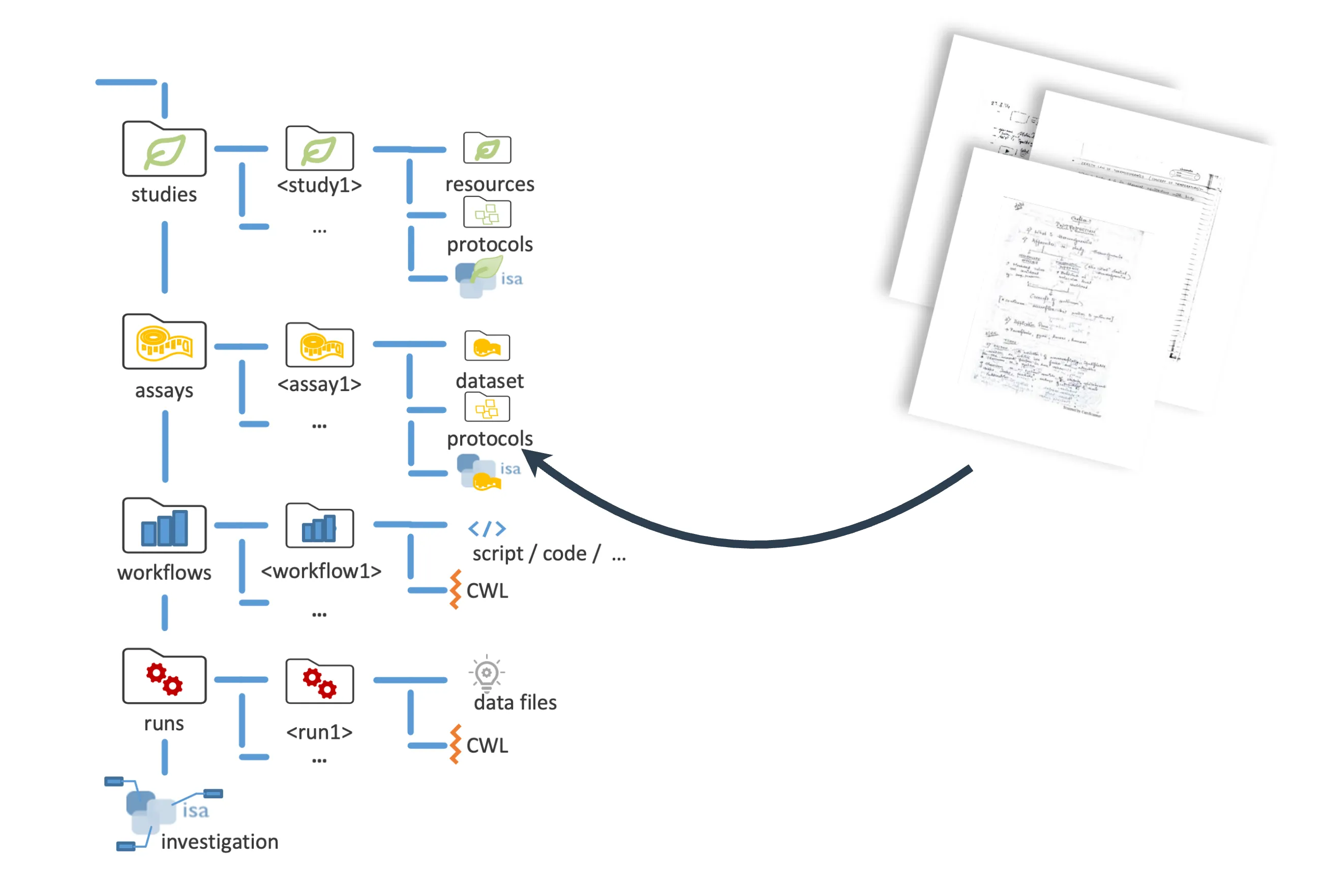Electronic Lab Notebooks (ELNs)
Protocols – Recipes to knowledge
Section titled Protocols – Recipes to knowledgeProtocols form the basis to laboratory procedures. In a kitchen a recipe defines what inputs (flour, milk, eggs, …) and steps (mix, bake…) are required to achieve what expected outcome (chocolate cake). Just like that a laboratory protocol defines what samples, materials, and components (plant leaves, buffer, centrifuge, …) can be processed (homogenize, mix, extract, …) to generate a desired outcome (plant leaf extract). Depending on the type of laboratory procedure, the protocol outcomes may be samples or data. In both cases the protocol is or contains metadata.
Protocols are the key to generate knowledge via predefined experimental processes. Since protocols are key to reproducibility and integrity of scientific results, they are an integral part of publications (e.g. the materials and methods section) to share, evaluate and reuse these methods with peers and communities.
Every lab builds on a collection of protocols. Some protocols may describe routinely performed standard operating procedures, while others may be continuously evolving and adapted to a specific use-case. In pre-digital times, protocols for a scientific project were collected in classical pen-and-paper lab notebooks. By design, the metadata knowledge collected in these single-copy protocols was hard to access (hidden in a shelf) and hard to maintain over generations of researchers or share and communicate with peers during the ongoing scientific process.
ELN – Digital protocol editors
Section titled ELN – Digital protocol editorsOnce a protocol is digitalized, the information that used to be stuck in a single copy of paper can be easily replicated, enabling faster collaboration, sharing, and reuse. This can be done via a combination of text software, local or cloud servers, wiki platforms or by using a specialized software such as – electronic lab notebooks (ELNs).
ELNs are designed to help overcome the limitations of classical pen-and-paper lab notebooks and to align with daily wet-lab routines. ELNs facilitate the editing and sharing of protocols, usually in a closed environment such as a lab or consortium. Designed as lightweight (low-burden, free-text) protocol editors, ELNs are a major step towards digitalization of laboratory processes.
ARCs – Packaging protocols combined with the data
Section titled ARCs – Packaging protocols combined with the dataProtocols generated in ELNs integrate well with the Annotated Research Context (ARC). Protocols and the metadata they contain have a dedicated place and schema within the ARC. Each study and assay subfolder in the ARC comes with a folder called protocols. This folder collects all protocols associated with a particular set of data files in the dataset folder. In addition, the isa.study.xlsx and isa.assay.xlsx workbooks associated with each study or assay, help to communicate the protocol metadata in a structured and machine-readable way.
To simplify the integration of protocols and metadata from ELNs into ARC, DataPLANT has delevoped the tool elab2ARC, which automates the conversion of eLabFTW experiments into ARC format.
Since ARCs are designed as FAIR digital objects which combine the data files with the metadata into one research data package, they facilitate the storage, sharing, and reuse of the research data as a whole.
